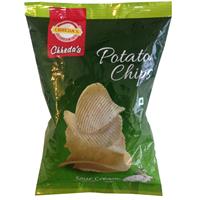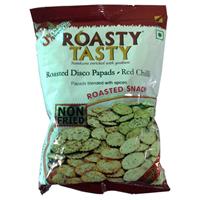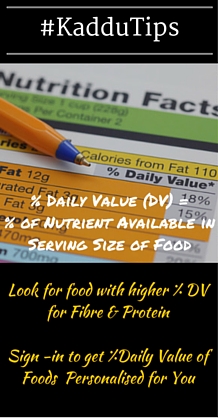
Chheda's Potato Chips Sour Cream & Onion
Products in ‘Crispies & Namkeen’ category range from 0.5 - 4

Current Product

- Compliments of Vitamins & MineralsThe micronutrients (Vitamins/Minerals) play an important role by ensuring proper functioning of cells and tissues.Each vitamin and trace mineral play a specific role in the body. For example, Vitamin C acts as antioxidant protecting cells from environmental damage, healing wounds and maintaining connective tissue whereas minerals like sodium, potassium and chloride function as electrolytes that assist in communication between cells necessary for nerve impulses and muscle contraction.Some products mimic the nature by adding artificial vitamins or minerals which have an identical form and function to those found in nature, but they are manufactured synthetically to meet extremely high standards of processed products.
- Know your Food - Flavouring SubstancesFlavouring Substances are added to Food products either to regain the flavour it would have lost during processing e.g. juices or to add a new desired flavour e.g. in case of biscuits, vanilla flavour may be added to otherwise food product without any flavour.Based on the resemblance of the flavouring substance to its natural occurrence, it is classified as natural, nature identical or artificial flavouring substance. Read this blog to find more about different flavouring substances.
- Scan before you snack!Snacking is a smart habit. Ready to eat/ cook snack options are often convenient and easily grab able. The key however, is taking a smart approach to snacking.Here are three simple tips to help you pick the healthier one
- Compare the serving size on the Nutrition Facts table to the amount of food you actually eat. For example serving size for biscuits is 24 gms (i.e. approx 3-4 biscuits) and if you eat 6 of them, your intake will change accordingly.
- Read the % DV (Daily Value). 5% DV or less is a little and 15% DV or more is a lot for that nutrient.
- Check for better - Less sodium, Less fat, More fibre, More Minerals like Calcium, Iron, etc.
- Highly Processed!Additives are added to the packaged foods for different reasons varying from increasing shelf life, to provide flavour and texture, increasing nutrition quality or required to manufacture some types of food.One of the ways to determine the degree of Processing is the number of additives you find in the ingredient list. The higher the number of additives greater is the degree of processing. Additives can be identified by looking for ingredients that begin with 'E' and have a number in them.It is generally recommended that food that is closer to nature is better hence it is better to choose food products with lesser number of additives.
- Loaded with FATEnergy available from a food is based on Carbohydrate, Fat and Protein present in it. The ideal ratio of energy obtained from these components is 65% from Carbohydrates, 20% from Fat and 15% from protein.More than 30% of energy available in this product is from FAT, which is 50% more than the ideal amount. Foods with High Fat are often loaded with Saturated Fat and Trans Fat both of which contribute to life style diseases including diabetes, obesity or Cardiovascular.Again, one should not go on the other extreme of having low fat diet as some amount of fat is required for various bodily functions like storing of energy, absorption of fat soluble vitamins such Vitamin A, D, E and K, insulate us and protect vital organs besides synthesis of specific hormones and cell membrane formation.Thus, it is important to eat food which has each nutrient in the right quantity and limit food products that give too much of one nutrient.
Disclaimer:Product Analysis is based on general practices in the field of Nutrition. Please check with or consult a qualified and licensed medical professional for its suitability to you.













